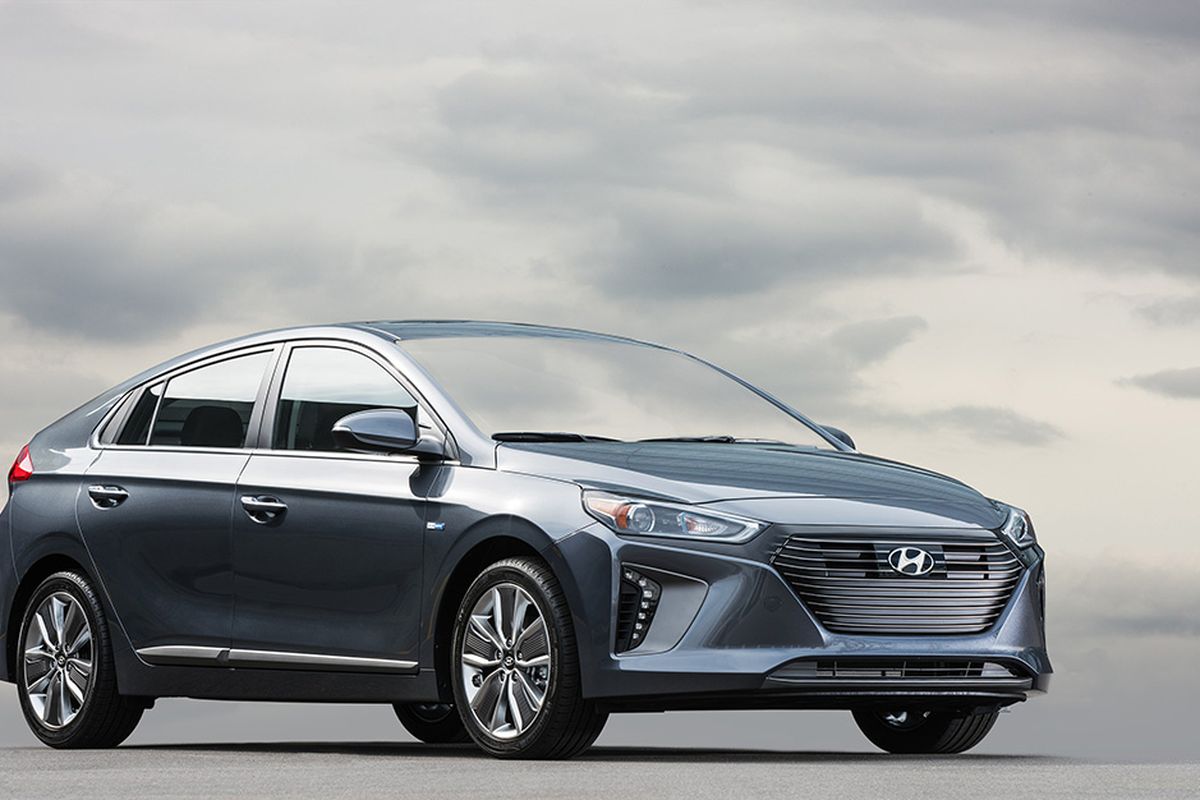Don Adair: Hyundai Ioniq hybrid goes head-to-head with Prius

Perhaps you’ve noticed the recent flurry of hybrid reviews in this space.
It’s not because hybrids are flying off showroom floors — though their market share continues to inch upward — it’s more because carmakers have seen the future.
To wit: The internal-combustion engine is under attack. A cluster of concerns — worries about air-quality and the instability of fossil-fuel markets, chiefly — threaten its hegemony.
China, the world’s largest auto market, promises to ban fossil fuel-powered car sales, date uncertain, and is throwing its weight behind electric vehicles. Britain and France will phase out internal-combustion sales by 2040. Germany hints it may follow suit and its carmakers have fast-tracked their electrification programs.
Hybrids a bridge to future
Granted, builders continue to improve the internal-combustion engine. In 2019, Mazda will debut a new technology expected to improve its engines’ efficiency by between 20 and 30 percent.
Meanwhile, hybrids are considered a bridge technology, one that will ease us from our dependence on petroleum and into the welcoming arms of renewables.
It’s in that context that Hyundai debuts the 2017 Ioniq, a compact hatchback available in hybrid ($22,200) and EV ($29,500) iterations. A plug-in hybrid is due by the end of the year.
An unabashed competitor to Toyota’s Prius, the Ioniq Hybrid wraps economy, utility and comfort into a contemporary package. Visually, the five-door hatch ignores the most obvious green-car design tropes. Despite delivering up to 58 mpg combined, it looks like nothing more than a youthful and sporty hatchback.
Attentive observers will recognize the sloping nose and flattened rear end common to purpose-built hybrids. The silhouette contributes to wind-cheating, efficiency-boosting aerodynamics.
Sporty looks, hybrid performance
A quick turn behind the wheel reveals that jazzy looks aside, the Ionia performs much like the competition. It accelerates quickly from a standstill but forward momentum quickly gives way. Merging at freeway speeds calls for a heavy foot on the throttle pedal.
Steering is lightly weighted and reasonably precise, though incommunicative. The Ioniq breezes comfortably through most corners, but prefers to not be pushed.
In a significant departure from hybrid convention, Hyundai fits Ioniq with a dual-clutch automated manual transmission. It pairs with the engine to provide seamless acceleration and smooth, quick shifts.
(Note to industry: If Hyundai can best the former mileage champ without the use of a continuously variable transmission, why can’t the rest of you?)
The Ioniq was conceived to be lightweight and affordable, qualities that are reflected in so-so cabin materials and road noise that surfaces at highway speeds.
Roomy cabin, fine ride
The cabin is roomy enough to comfortably accommodate four full-size adults and, thanks to its compact lithium-ion battery pack, Ioniq yields more cargo space than the Prius.
The front seats are nicely padded and covered in environmentally friendly soy-based materials. The rear seats are well padded and comfortably contoured.
Ride quality is quite good, considering our tester’s 15-inch low-rolling resistance tires and compliant suspension settings. Hitting a large bump or pothole at speed can cause the Ioniq to wallow momentarily but, for the most part, it waves off road-surface imperfections.
We tested the Ioniq Blue ($22,200), the most efficient and least expensive of the hybrids. It bests by 3 mpg the better-equipped and heavier SEL ($23,950) and Limited ($27,500) trims.
It’s not that Blue is badly equipped. Standard gear includes automatic bi-xenon headlights, keyless entry and ignition, automatic climate control, a rearview camera, a 7-inch touchscreen, Apple CarPlay and Android Auto, Bluetooth, a USB port and satellite and HD radio.
Most buyers will likely gravitate to the SEL, with its LED daytime running lights and taillights; heated mirrors and heated front seats; power driver’s seat; leather-wrapped steering wheel and chrome accents. Blind-spot monitoring and rear cross-traffic alert are standard and an available Tech package adds intelligent cruise control, automatic emergency braking and lane-departure warning.
Prius has ruled this roost since its 1998 U.S. debut and won’t soon be topped by the Ioniq or any other hybrid play. Still, we all win when a worthy new competitor joins the fray.
Contact Don at don@dadair.com or visit www.dadair.com.
2017 Hyundai Ioniq Hybrid Blue
Vehicle base price: $22,200
Trim level base price: $22,200
As tested: $23,16 (includes destination)
Options: carpeted floor mats
EPA ratings: 58 combined/57 city/59 highway
Regular unleaded gasoline specified
